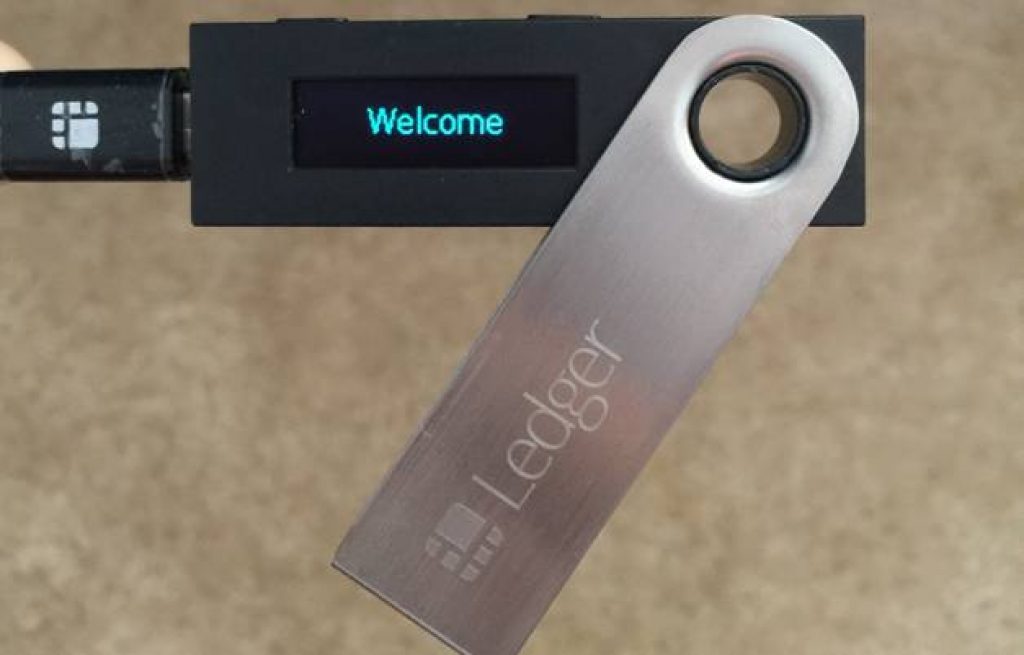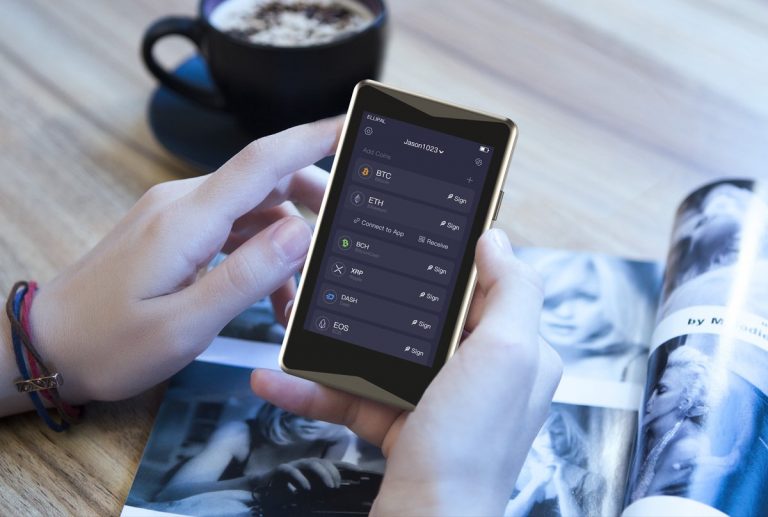
2021-10-1 19:09 |
An issue that is a problem for many people who want to buy Bitcoin or some other cryptocurrencies is the issue of secure storage of their funds. Considering the price of the hardware wallet and the fact that few people can afford them and spend weeks waiting for that wallet to arrive, they are not such a popular option for everyone.
As the cryptocurrency market develops exponentially, new and more acceptable methods of storing cryptocurrencies are also developing, which are also very secure ways of storing funds. I guess now you’re wondering what those methods are? A method that is becoming increasingly popular these days is storing your Bitcoin on a USB drive.
In this article, you have the opportunity to learn how to store Bitcoin on a regular flash drive, how to do it (step by step), what the risks are, as well as the differences between a hardware wallet and a USB drive.
Can you store bitcoin on a flash drive?Although slowly but surely, cloud storage has become the most commonly used method for storing data in the last few years, USB drive or flash drive is still at the very top. While it is slowly losing its primacy in data storage, it has gained one very important and useful function – it is becoming very used as cold storage for Bitcoin and other cryptocurrencies. It is a Hardware wallet that is easy to use and very convenient at the same time.
It does not store your coins. But it stores something much more important. If you purchased Bitcoin or any other cryptocurrency, it is used to store your private keys and other credentials that you need to access your funds. You can create an offline wallet on your flash drive, and at the same time, with its help, make transactions.
How to store bitcoin on a flash driveOnce you set up an offline crypto wallet on a flash drive, you can send your Bitcoin to that USB. And how can you do that? Using Electrum Wallet, currently the oldest and most popular software wallets, you can quickly turn your flash drive into an offline crypto wallet. Of course, it is very important to properly prepare your USB drive before you download and install the software. To make your offline wallet a safe wallet, follow the steps we have prepared for you and gradually reach your goal.
Create a bootable flash driveIt should be one with persistent encryption storage. You can find a lot of software on the Internet that can help you with this. The best option is to use a new USB drive, that there is no data stored on it and that it is formatted.
Download ElectrumYou can find the wallets for Windows, Android, iOS, Linux, and Python on their official website. Links to install these wallets can be found here. Only after you disconnect your computer from the Internet can you start installing the software. You can do this in two ways: first, disable the Internet connection on your computer, and second, unplug the cable.
Plug a USB drive and install Electrum WalletThe installation process usually takes up to a few minutes. When you run the Electrum Wallet installation, a window with destination selection options will pop up. Find the location of your flash drive and select it. At the end of the installation process, come up with a strong password and seed phrase, and also be sure that you will not forget them.
This is how you secure your wallet. Also, if you need any, you can apply changes to the wallet settings. Note: One of the common reasons for losing funds is that users often forget their password and seed phrase.
IMPORTANT! Always use safe eject feature and don’t rush to take your USB outFailure to eject it safely may damage your USB drive. So do not rush with this step. Take your time.
Notable Risks With Using a Flash DriveUSB drives, although one of the safest methods of storing Bitcoin and other cryptocurrencies, come with risks that can lead to the loss of your funds. They can be easily stolen, they are vulnerable to malware, because of their small dimensions, they can be misplaced or lost, or the worst option, damaged beyond repair. So here are some tips on how to avoid situations like this in the future:
– for extra security, make a duplicate of your flash drive,
– place it in a secure place, where it cannot be stolen or come into contact with something that could damage it (water, fire). Suggestion, a safe.
– to eliminate the malware vulnerability, set up the operating system on your USB drive.
The Difference Between a Hardware Wallet and a USB DriveA better, but at the same time, more expensive alternative to a flash drive offline wallet is a Hardware wallet. A USB drive cannot sign a transaction for you, and because of that, it is not secure for sending transactions. It simply holds a file that holds your key. And that’s it. On the other hand, a Hardware Wallet has your private key stored directly within it, it never exposes that private key to anyone, and in order to send a transaction, it requires a physical confirmation.
That is the main difference between an ordinary USB drive and a Hardware wallet. With your Hardware wallet, your private key never leaves the device. So, at least in theory, your private key cannot be stolen from it.
Hardware Wallets are also characterized by super security, convenience, support for various assets, and wallet-to-wallet trading. They are manufactured strictly for one purpose – storing your cryptocurrency data.
FAQs What is the best way to store BitcoinWe know that Bitcoin is a digital asset and that keeping it safe can be very complicated, especially for a beginner in this world of cryptocurrencies. As we mentioned above in the article, if we look at the reasons that have led many people to lose their coins in the past, we know that we must be very careful with choosing how to store our bitcoin safely. If someone steals or if you lose your Bitcoin, there is nothing you can do to get them back. You lost them forever.
But don’t worry. With a proper understanding of these risks, ways to avoid them, you will not get into such a situation, and you can easily eliminate all the risks of losing your bitcoin. There are many ways to store your bitcoins or other cryptocurrencies, and some of the best ways are:
– Hardware wallets
– Multi-signature wallets
– paper wallet
Your wallet will make a seed phrase that you need to write down on a piece of paper or a metal plate and then put it in a safe place (or several safe places – as backups). Ideally, your wallet should be backed by a node that you are running.
Here you can find an overview of the Best Cryptocurrency Wallets for Bitcoin and altcoins.
How do I put my bitcoin in cold storageLike you do with any other Bitcoin transaction, you copy the address or scan the public cold storage wallet QR code using a hot crypto wallet. After that, the only step that is left is to send your bitcoin to your cold storage. You can also check the status of your Bitcoin anytime with a Bitcoin blockchain explorer.
Proof that cold wallets are a smart choice is that serious crypto investors use them. Which is the best option for you, it is of course up to you to decide. Here, you can find more articles to help you decide which wallet to choose, their characteristics, advantages, and disadvantages.
Is it safe to store coins on Coinbase & BinanceThe two largest cryptocurrency exchanges available today are Coinbase and Binance. Both exchanges provide their users with access to buy, sell and trade with Bitcoin and many other cryptocurrencies. But the big question is, is it actually safe to leave or hold your bitcoin or other crypto assets on Coinbase or Binance?
Yes and no. And both answers are correct. Both, Coinbase and Binance offer strong security settings in order to protect your digital assets. But no matter how secure these exchanges are, they will always be a hot target for hackers.
Visit Coinbase Now
Coinbase and Binance hold the most of their funds on cold storage. Because of that, most of their funds are much harder to steal than small parts stored on their hot wallet. You heard the famous quote, “Not your keys, not your bitcoin.” Even this quote is directly referring to bitcoin, it can be applied to any other cryptocurrency.
Use exchanges only for their sole purpose, to exchange your money for some bitcoin or some other crypto. Don’t get me wrong, both Coinbase and Binance are providing a great service. But at the end of the day, storing your bitcoin or other crypto assets for the long-term on any of these exchanges or any other exchange is a big no.
Visit Binance Now
How to store bitcoin offlineAs we have analyzed through this article, we can conclude that there are many ways we can store our bitcoin, but offline storage is the safest way to keep your bitcoin – your bitcoin. Consider your unique situation and select a storage method that works best for you.
If you found this article interesting, you will surely like the following articles:
– Best Cryptocurrency Wallets (Mobile, Desktop, Paper)
– Ledger Nano S Review – Is It Still the Best Hardware Wallet?
– Ledger Nano X Review – Full Guide for Beginners
– Trezor Review – Complete Trezor One Wallet Guide for Beginners
The post How to Store Bitcoin On a USB – Can Any USB Be a Crypto Wallet? appeared first on CaptainAltcoin.
origin »USBCoin (USB) на Currencies.ru
|
|












